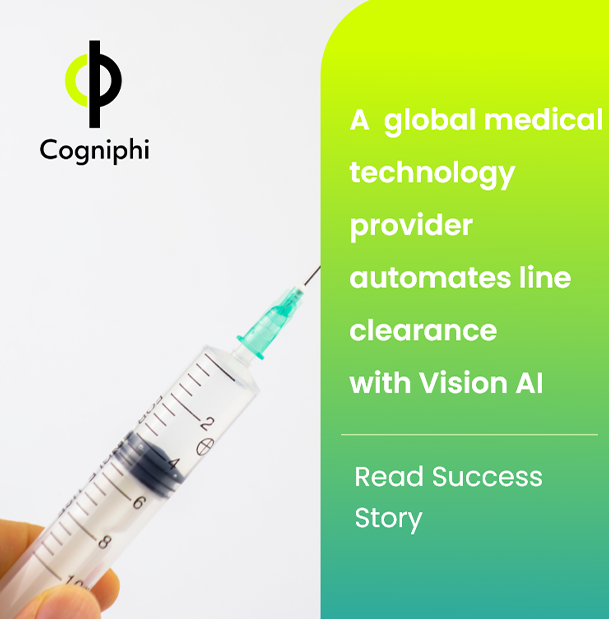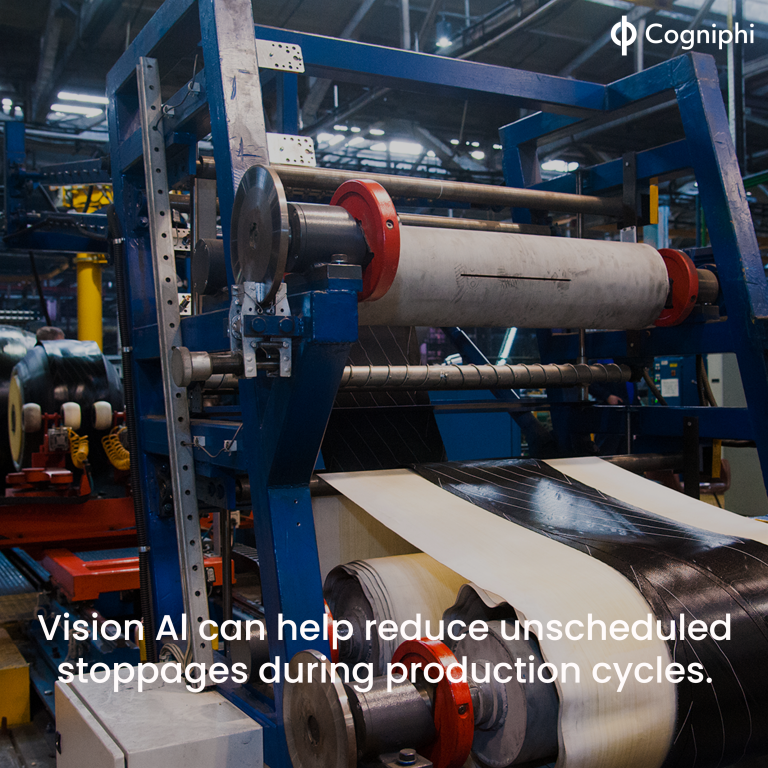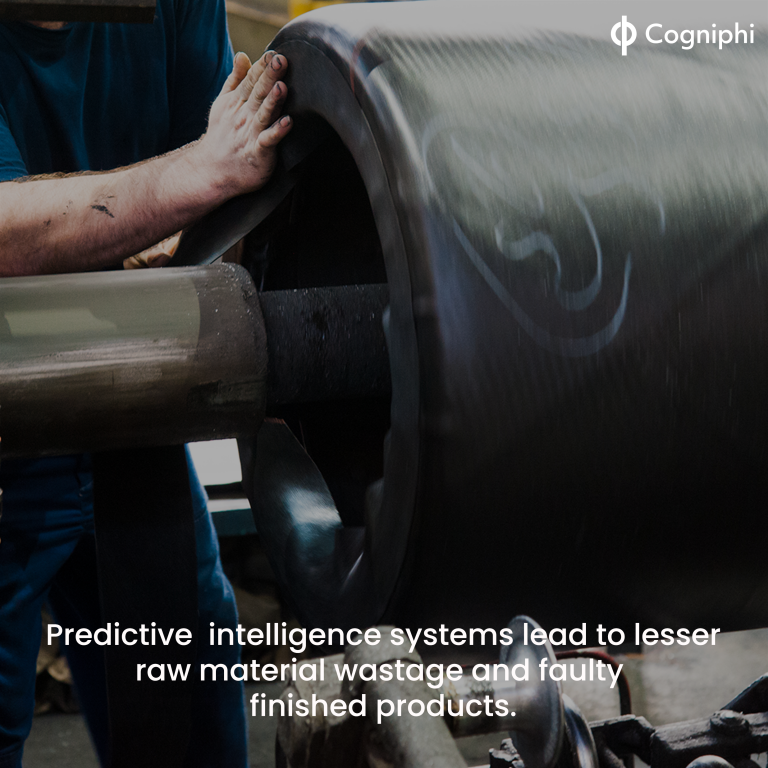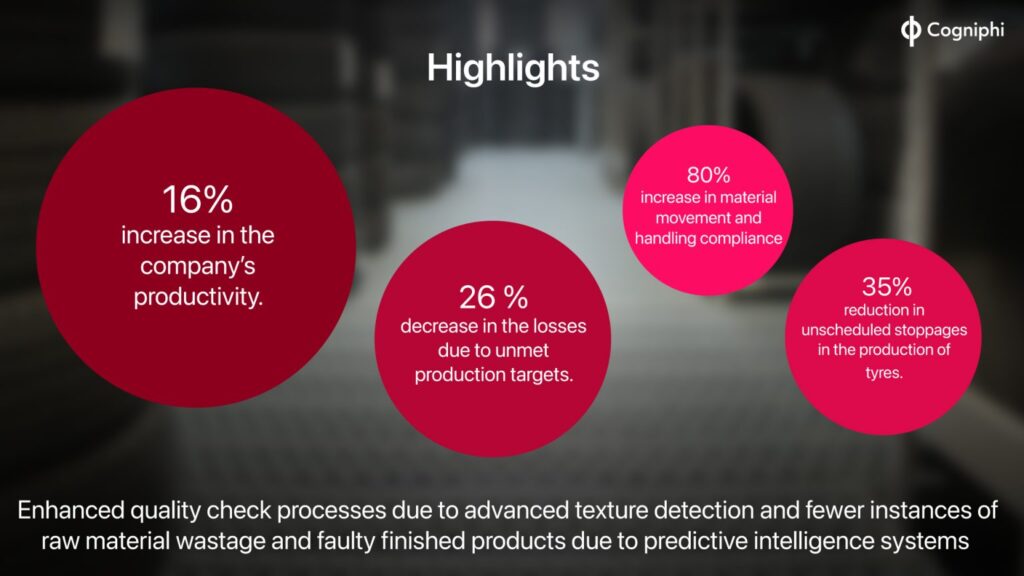Background
The client is a global medical technology company that manufactures and sells medical devices to health care institutions, science researchers, clinical laboratories, the pharmaceutical industry, and the general public.
The company partners with organizations and governments around the world like Australia, South Korea, and UAE to name a few, and have associates across 50 countries. The company is the chosen partner to distribute large quantities of syringes and needles for Covid -19 vaccination in many countries.
Problem
The client’s manual inspection of printing labels on syringes, syringe wrappers, and in-line clearance led to significant errors in the printing, higher costs from lower workforce efficiency. One mistake in the printing of a sample meant discarding of the entire LOT/batch of syringes. This was a considerable problem especially since the client was the chosen government partner for the distribution of large quantities of syringes for covid-19 vaccination.
Product recalls were costing the loss of hundreds of thousands of dollars for clients. The clients also experienced the potential loss of faith of customers and distributors in the brand.
Client Challenges
Manual Inspection is labour intensive, tedious and prone to errors
Prior to VisionAI implementation, the process of visually inspecting pharmaceutical labels was performed by human operators.
- Each label has to be carefully scrutinized to ensure that the print is clear, eligible and the printed information such as MFG date, expiry date, LOT number, directions for use and pricing validation are accurate.
- Occasionally, the printing process generates defects such as broken characters, smudges and ink splashes thereby creating errors in the labels.
- Gross printing defects that occurred across several samples were detected manually, but small critical errors on other labels were missed out.
- Resolving these issues means checking each and every syringe and label at low speeds, which would add up time consumption and labour.
How VisionAI Made the Difference
Vision AI was integrated into the existing production line system to read characters, and icons printed on syringes, Shell Pack/Case Pack, and Unit Pack.
- The AI algorithms then further enhanced the resolution of each scanned image, reduced noises, and compared each label against standard accurate reference templates.
- Defects in printing were identified in real-time and displayed to the operator for removal. Graphic templates that consistently rendered poor-quality printing were identified to further enhance quality. Since samples were not available during the development, we used representative samples and fine-tuned the system when actual samples were available.
- The Computer Vision implementation automatically detected all the anomalies along with image evidence.
- An anomaly report was made available, which can be downloaded in various formats. Thus, by automating line clearance , multiple levels of tedious manual quality checks were made faster and more efficiently.
Tech Edge – Vision AI Challenges and Wins
Typical neural networks with multiple pipelines for object detection, text and texture analysis require training with substantial amounts of data and fall short inaccuracy of detection particularly in case of variants.
A platform like Cogniphi AIVI supported by multiple Vision AI engines need extremely low data for training. Moreover, there is a continuous Improvement in Accuracy with reinforced self-learning.
For the particular project, AIVI’s detection based on multiple engines AIVI Core, AIVI text, AIVI Pattern, derive co-relations and valuable insights from unstructured data ensure high accuracy compared to general ML approaches.
- AIVI Core– A specialized engine trained, taught, and modelled to detect objects that can be moving with occlusions or inclusions.
- AIVI Text– This engine focuses on extracting data from prints and categorizes data to train the model to interpret and analyze this data.
- AIVI Pattern– A second-order functionality that can take additional contexts and detect occurrences of patterns. It uses a series of de-noising and signal enhancement algorithms to detect patterns from features)
Challenges
- Large sets of SKUS and its variants
- Limited samples for modeling and training of the system
- Type of wrapper material – Plastic coverage caused a lot of reflection problems
- Folding on the printing areas making it difficult to read and process the data
- Printing not consistent and compliance failures
- Compliance checks and GOVT. norm adherence risk
VisionAI Wins
- Automated Line Clearance Inspection with very minimal Manual Intervention.
- Four levels of quality check that are done manually can be done with ease in a single click.
- Devised Edge solution that runs on CPU without need for any accelerators
- Created custom GAN to improve training data and also to predict QA issue vs lighting/orientation issues.
- Quality Check of SKUs in production line can be done in few minutes which resulted in improved productivity by around 35%.
- Higher Quality-End to End checking of wrappers, Shelf pack, and Case pack with the reference data (Graphics file).
- The system detects even the minute variations against Graphics compared to the manual mode of inspection resulting in reduced defect leakage to production (reduction in compliance defects by 20%).
- Covers 134 SKU – Unit pack and Shell Pack and Case Packs. Verification happens in line and in real-time.
- Covers even customized samples.
- Onboarding and Deployment of SKU in quick time.
- Visualization through dashboard and reports.
- Anomaly reports along with evidence for future reference.
Vision AI – Key takeaways
Visual inspection with AI operates across a wide range of industries and use cases, potentially saving manufacturers’ millions of dollars at each facility.
- Accuracy: Computer Vision achieves a significant amount of accuracy in packaging within the acceptable criteria set by the owner’s standards.
- Reduced Costs: With automation in computer vision, the company’s working personnel are no longer needed for the physical inspection of packaging and freeing up more working hands for important tasks. The CV also reduces human error factors, which avoid a lot of wastage.
- Reduced Downtime: With automation, quality control became much easier and smoother, allowing for 24/7 inspection time and no rest breaks needed.
- Repeatability: Monotonous tasks are literally what computer vision solutions were developed for. Repetitive work is done at a steady pace with no time wasted on thinking as the algorithms are already set. With computer vision, there will be no requirement for training or retraining personnel either.




